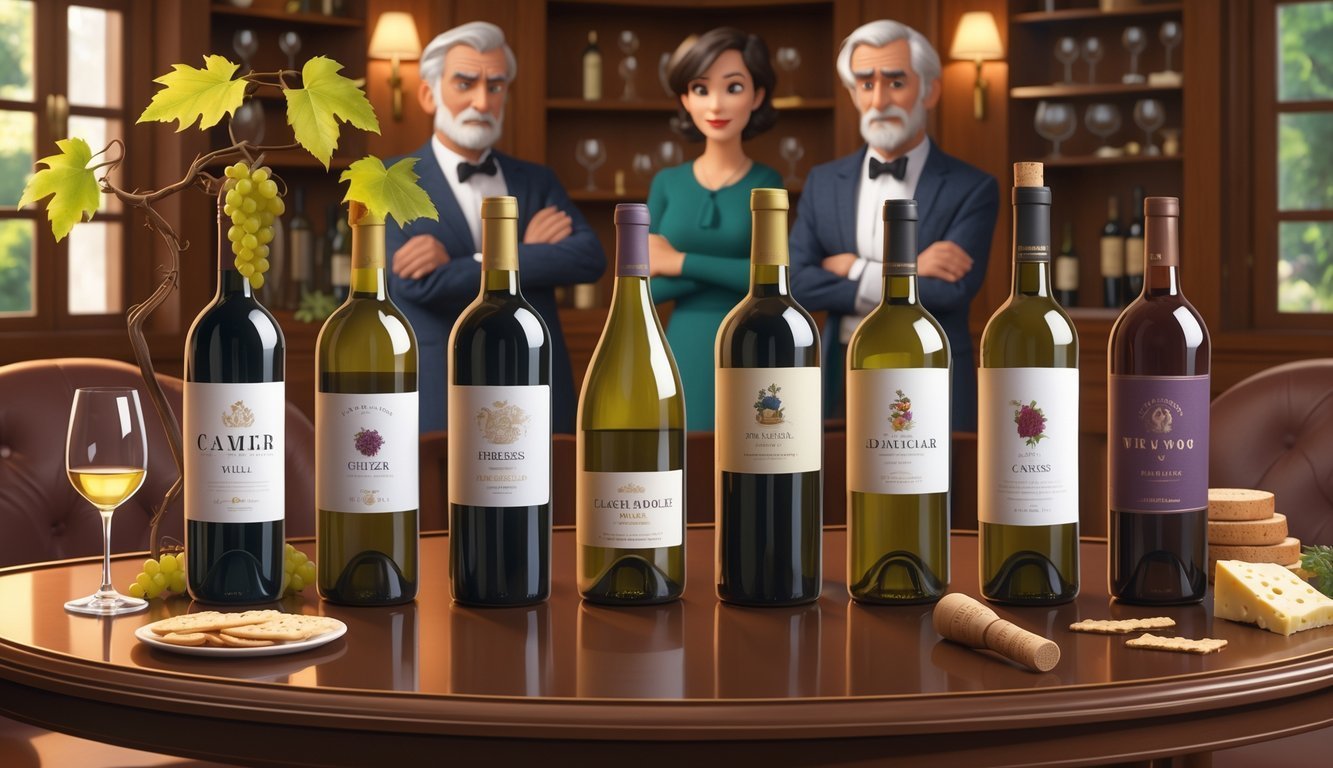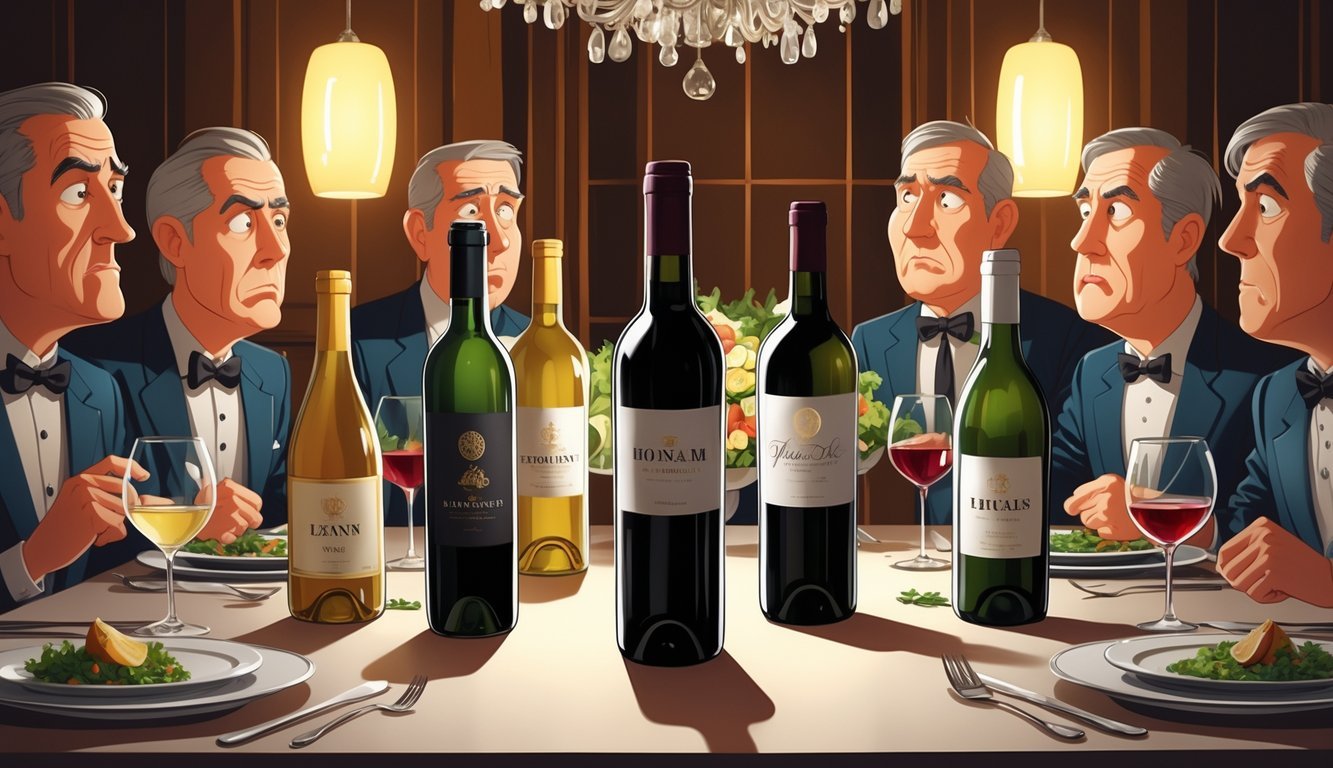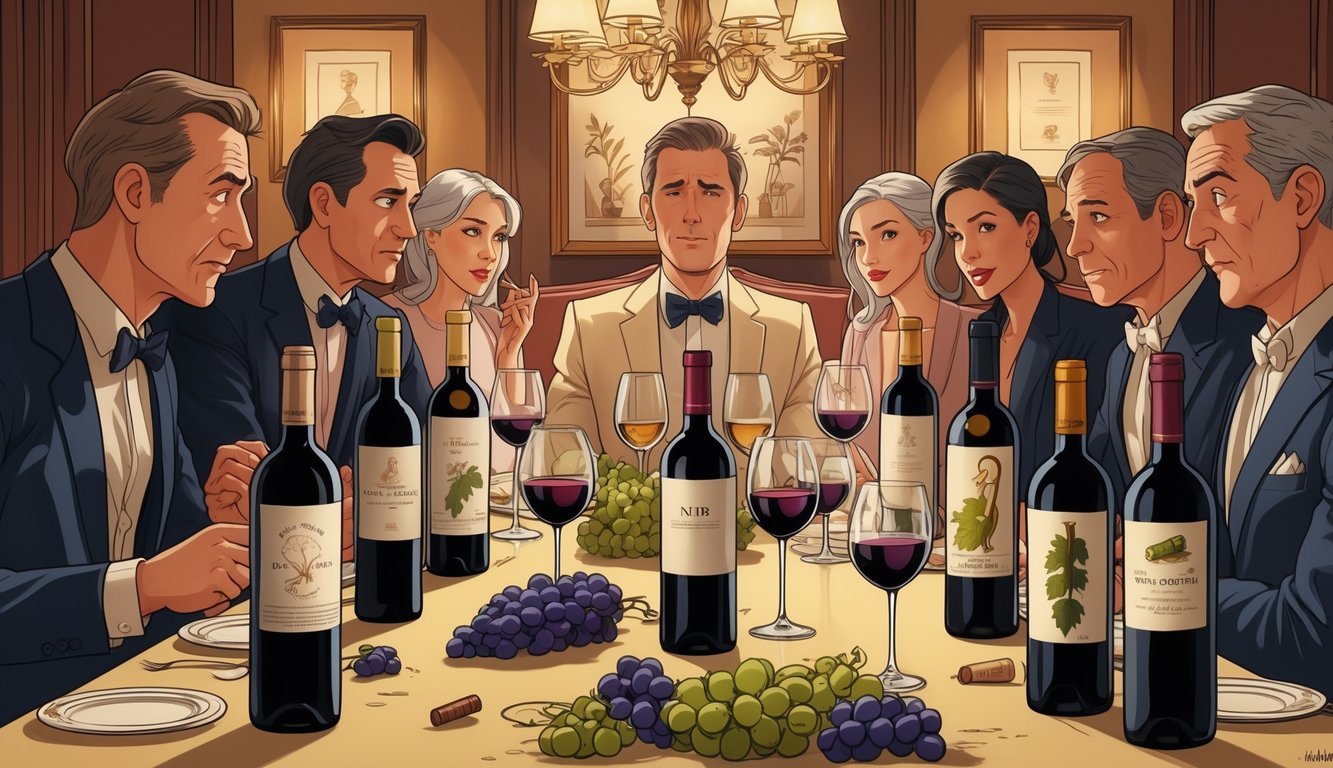PsychNewsDaily Publishers
100 Summit Drive
Burlington, MA, 01803
Telephone: (320) 349-2484
PsychNewsDaily Publishers
100 Summit Drive
Burlington, MA, 01803
Telephone: (320) 349-2484
Choosing the wrong wine can diminish your chances of impressing discerning in-laws. Avoid overly sweet, cheap, or bitter wines to maintain a polished impression.

Trying to impress your snobby in-laws with wine? That’s always a bit of a minefield, especially if you pick the wrong bottle. Not every wine leaves a good impression—some might even make things more awkward than they need to be.
Dodging the worst wines can spare you those uncomfortable moments and help you look thoughtful and polished.
Some wines just have a reputation for being cheap or weirdly bitter, and anyone who knows their stuff will notice. Blends with cheap additives or those that taste overly sweet and artificial almost never impress serious wine drinkers.
If you go for something too trendy, too sugary, or super bitter, you might come off as clueless. Honestly, knowing what to skip helps you choose better options with more confidence.
Here’s a quick rundown of the seven worst wines to avoid when you’re trying to wow your in-laws. Maybe you’ll even boost your odds of making a solid wine impression.

If you pick the wrong wine, your snobby in-laws will probably notice right away. Some bottles are just too sweet, too cheap, or totally lack the depth serious wine lovers expect.
Avoid these and you’ll keep the dinner vibe a lot smoother.
Generic sweet reds might sound like a safe bet, but seasoned wine drinkers almost never like them. They taste syrupy and lack any real balance.
That sweetness just covers up the flavors instead of making them better. If your in-laws like dry or complex wines, these come off as childish or just plain lazy.
A wine with simple, sugary flavors usually feels like a shortcut. Try reds with clear fruit notes and some tannins instead.
Sweet reds don’t pair well with food and always feel kind of one-note.
Boxed wine is cheap and easy to serve, but it screams low quality. Most boxed wines get churned out for quantity, not for any real richness or depth.
You’ll probably notice they taste watery or bland. Anyone who cares about wine will spot the difference instantly.
Boxed wines also go stale faster once you open them, so the taste fades fast. Save these for backyard barbecues, not dinners where you need to make a good impression.
White Zinfandel is known for being cheap and way too sweet. It’s kind of an entry-level wine, and honestly, it feels outdated.
That light pink color and simple taste don’t offer much in the way of elegance or complexity. Your snobby in-laws might see it as not serious enough.
It doesn’t pair well with most dinner party dishes. Many wine experts steer clear of this one because it can taste artificial or just bland.
If you want a rosé, pick a dry version made from good grapes, not mass-produced White Zin.
Some wines get loaded up with flavors like strawberry or chocolate to cover up poor quality or make them taste sweeter. These can be fun at casual parties, but they’re a mistake if you want to impress anyone who actually cares about wine.
Flavored wines feel fake and don’t show off the natural character of the grape. They miss all those subtle aromas and that nice acidity.
Your in-laws will probably see these as cheap gimmicks. Stick to wines that actually taste like where they come from and what grape they’re made from.
That way, you show a little respect for winemaking—and for your guests’ palates.

Sometimes, a wine looks impressive but tastes totally wrong. That can make things super awkward.
Some bottles seem fancy but don’t deliver, and others are just too cheap or even past their prime. If you know what to avoid, you’ll pick better bottles and feel more confident.
Cheap-looking imports or bottles with flashy, over-the-top labels might catch your eye, but they usually don’t taste great. These wines can be flat or just plain odd, and your in-laws will notice.
Some are hyped as rare or exotic, but most don’t live up to it. Unless you know the style or producer, it’s better to skip them.
Stick with wines that have simple, clear labels from regions people trust. That shows you actually care about quality, not just shiny packaging.
Not all bubbly is created equal. If you go for the cheapest sparkling wine, you’ll probably get something too sweet or kind of flat.
Cheap sparkling wines have big, aggressive bubbles and lack that crisp, fresh taste that makes sparkling wine fun. They can overpower the food and the conversation.
Try a mid-range Prosecco or Cava instead. You’ll get better bubbles and flavor without spending a fortune.
If a wine’s too old or stored badly, it can taste like vinegar or smell musty. Too much air or heat ruins it.
Oxidized wine loses its fruit and just disappoints. It might look fancy if it’s old, but unless it’s made to age, you’re better off leaving it alone.
Always check the vintage and storage tips. If a wine should be drunk young, don’t open it years later expecting magic.

Picking the right wine really comes down to knowing what to avoid—and what to look for instead. It helps if you can spot low-quality wines and avoid common mistakes people make in the wine aisle.
You’ll also find a few suggestions for crowd-pleasers and get a sense of what makes a wine feel high-end.
Skip wines that are way too bitter or too sweet for the food. For instance, dry reds don’t work with sweet desserts. Heavy oak flavors can also turn off guests who like their wines light and fresh.
Watch out for wines that taste sour, flat, or weirdly bitter. Sometimes poor wines have a strange smell or just too much acidity with no balance.
If the bottle looks damaged or the label seems sketchy, it could be fake or messed with.
Picking wines just because they’re expensive or have flashy labels is a classic mistake. Don’t ignore food pairings, and make sure the wine matches the meal.
Oh, and don’t assume all dry wines are hard to like—light whites like Pinot Grigio are usually safe bets.
Go for light, unoaked whites like Pinot Grigio or Sauvignon Blanc. For bubbles, try an affordable, quality option like Delamotte if you want Champagne vibes.
These usually go over well with most guests.
High-end wines have balanced flavors, good acidity, and some complexity. They feel smooth and might have fruit, spice, or earthy notes that change as you sip.
The bottle and label usually look well-made and legit, too.
No, price doesn’t always match quality.
Some expensive wines really earn their price tag, maybe because they use rare grapes or have aged for years. Still, I’ve found plenty of affordable wines that taste just as good.
Don’t fall into the trap of thinking a high price always means a better experience. Sometimes, it just doesn’t.